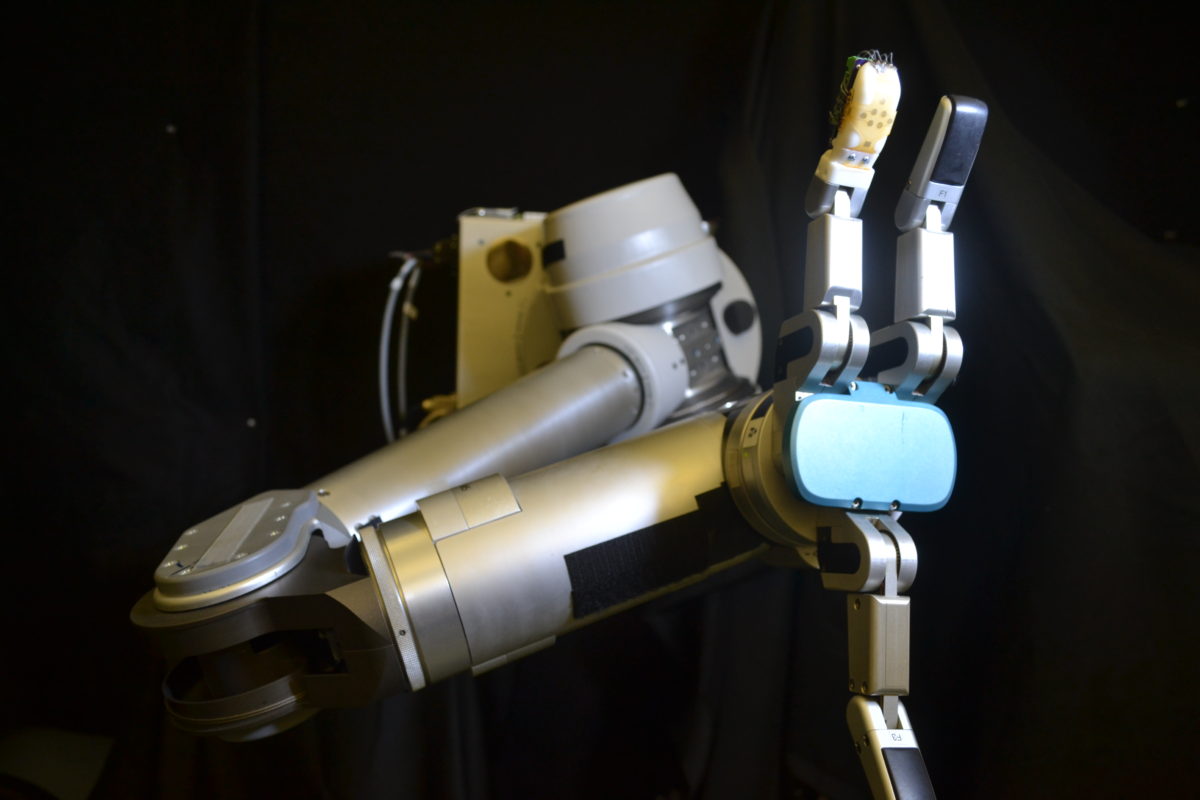Previously I discussed the newest breakthrough in synthetic muscles for robots that could let them walk like humans. But, there is still one major hurdle to cross before they are actually like us: the skin. It is everything to us. It makes us feel the wind outside, the sun on our face, and the warmth of fire. The skin also alerts us to our surroundings, with pain and pressure, or to the grip of objects in our hands. The eyes and ears relay a lot of information to us, however, what is hidden can still hurt us without us seeing or hearing anything. The same is for robots, they can hear and see through cameras and microphones, but they can still be hurt by something they did not notice. There is, however, a new solution to this.
First, in 2010 Paratech was developing artificial skin for MIT that could sense where the robot was touched and the pressure of this touch (Hornyak, 2010). This way a person could slap or tickle a robot and it would know the difference. This means that even when something hidden touches a robot, it could lead to a spontaneous retreat or cause the robot to use its eyes to search for the point of contact. This ability to react to touch is especially useful for robot helpers of people in constantly changing environments (Astrobio, 2011).
There is still one problem with the above: the robot would be able to feel pressure, but it would not feel when an object is moving. This would undoubtedly result in many broken things when having a robot cook for you. The researchers from the University of Washington made something for this, a new electronic skin that does just what is necessary: let a robot sense the movement of an object it is holding (through shearing forces). The way researchers developed a skin that senses this is by having it sense when one side of the skin becomes a bit tauter and the other side bulges (Coldewey, 2017). This sense of touch is critical for prosthetic and robotic applications (Langston, 2017). With this information a robot can adjust its grip and reposition the object it is holding. The result, fewer broken dishes.
Now, with one hurdle after another being overcome to having robot helpers. How long before we all have our personal robot Jeeves?
References
Astrobio. (2011, July 1). Sensitive skin for robots. Retrieved from Astrobio: https://www.astrobio.net/also-in-news/sensitive-skin-for-robots/
Coldewey, D. (2017, October 18). Robots will touch more tenderly when they wear this sensitive skin. Retrieved from Techcrunch: https://techcrunch.com/2017/10/17/robots-will-touch-more-tenderly-when-they-wear-this-sensitive-skin/
Hornyak, T. (2010, February 24). Robots to get sensitive with artificial skin. Retrieved from Cnet: https://www.cnet.com/news/robots-to-get-sensitive-with-artificial-skin/?_escaped_fragment_=
Langston, J. (2017, October 17). Flexible ‘skin’ can help robots, prosthetics perform everyday tasks by sensing shear force. Retrieved from University of Washington: http://www.washington.edu/news/2017/10/17/flexible-skin-can-help-robots-prosthetics-perform-everyday-tasks-by-sensing-shear-force/


Interesting article! I think this a very important topic, since the implementation of robots is going very fast and the feature of ‘skin’ seemed to stay behind for a long time. I have been reading a bit into your chosen subject, and found this article on stretchable skin, I think this comes down to pretty much the same thing as you are writing in your last paragraph (on electronic skin). This should enable robots to feel force and vibration (movement) as well! Very interesting I think, but of course there still are a lot of obstacles to overcome before such a invention can be implemented. https://www.engadget.com/2017/10/18/stretchable-skin-robots/